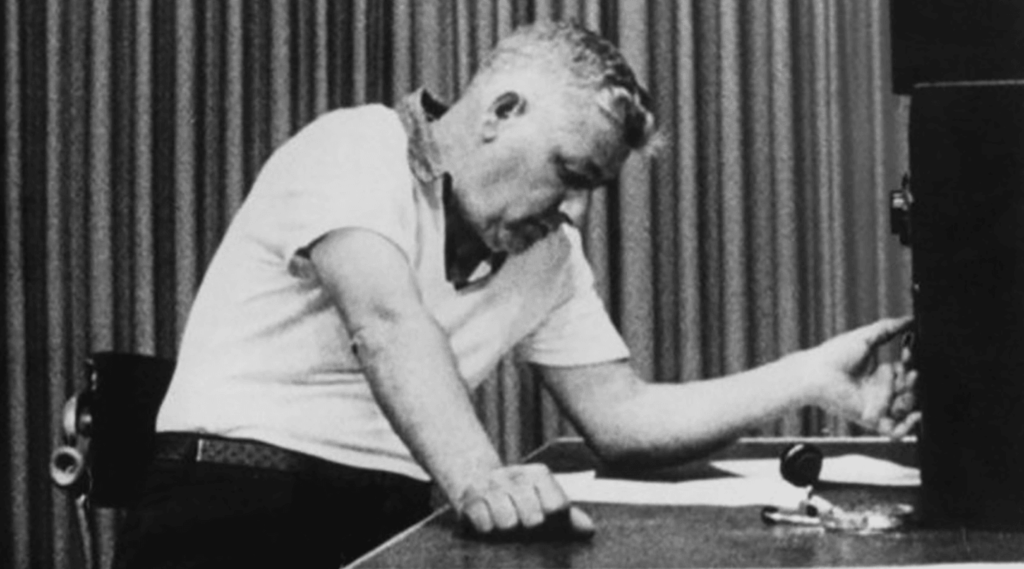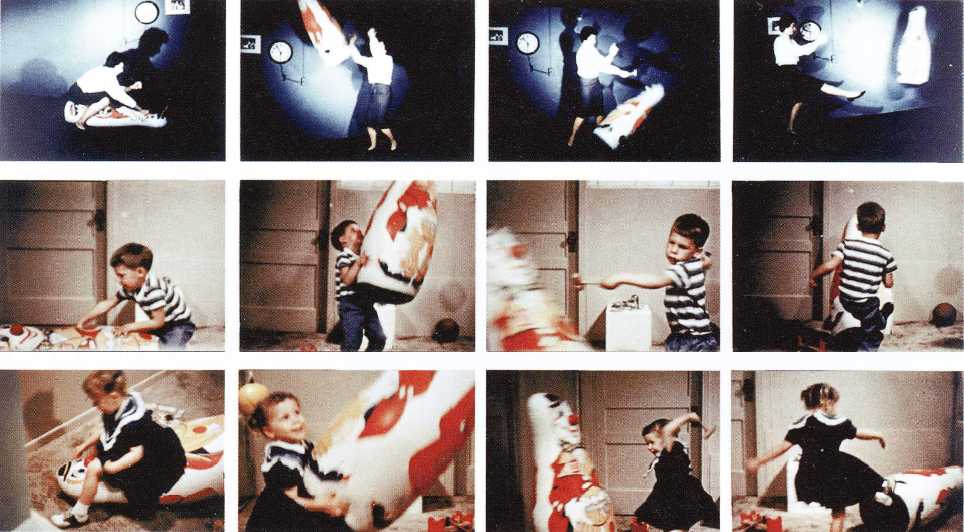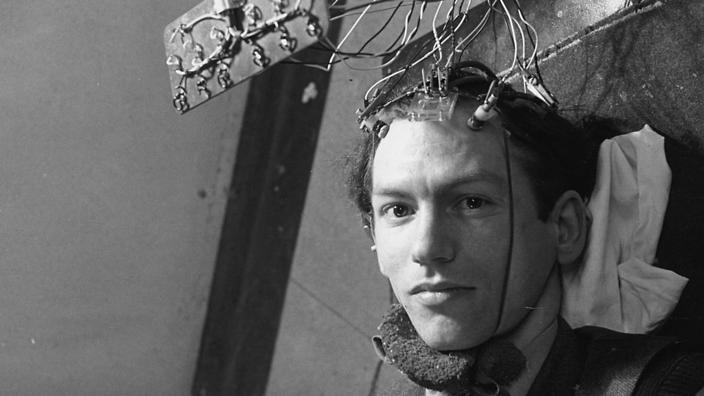What is and isn’t regarded as ethical is a complicated and heated topic for debate. One area, in particular, is whether it is ethical to harm someone to help others. Many will draw a hard line in the sand and state that it is never justifiable. Others might have certain tolerances, such as, if one can significantly help a large enough group of people, then some amount of isolated harm may be acceptable.
Scientific experiments can often find themselves at the heart of these debates. A key breakthrough could save the lives of millions for generations to come, yet every experiment needs a subject. With this in mind, let’s take a look at 10 of the most controversial psychological experiments of all time. All have been heavily criticized for overstepping ethical boundaries, and many of them have been accused of being outright sadistic.
The Milgram Experiment
In Stanley Milgram‘s infamous experiment, participants were asked to administer an electric shock to a learner each time they got an answer wrong. They then had to increase the voltage before asking another question. While the participants thought they were part of a study exploring learning methods, they were actually the subjects of another experiment. Some participants were actors ― and the shocks were not really administered. The real study explored how much someone would be willing to cause pain to another as a result of being told to do so by an authority figure. The study showed that the majority of participants administered the maximum level of what they believed to be 450 volts, despite the “earners” crying out in pain. While the actors actually didn’t receive any real harm, the participants who administered the electric shocks were under severe stress during the experiment and were deeply affected long afterwards.
The Stanford Prison Experiment
In 1971, Professor Philip Zimbardo, a professor emeritus at Stanford University, enlisted 24 male volunteers to explore the psychology of prisoner ill-treatment. The participants were split into two groups, prisoners and guards. Zimbardo, playing the role of superintendent, created a convincing simulated prison, complete with barred doors, prison cells and guards. Those assigned the role of prisoner were arrested at their homes and taken to the local police station. They were then fingerprinted and photographed before being blindfolded and dropped off at the “prison.” Once there, the prisoners were stripped of their personal items and dressed in prison clothes. Some of the guards were strongly affected by their role and within hours, abuse began. The guards verbally harassed the prisoners with insults, woke them up with whistles and forced them to complete pointless tasks. They sprayed them with a fire extinguisher and forced them to strip naked. The guards also removed the prisoners’ beds, therefore forcing them to sleep on the concrete floor. After five days, Zimbardo had to prematurely end the experiment. Although it didn’t even last a week, many of the prisoners suffered intense emotional trauma.
The experiment inspired a movie, a book ― “The Lucifer Effect: Understanding How Good People Turn Evil” ― and a documentary.
The Bobo Doll Experiment
In the early 1960s, Professor Albert Bandura, a professor emeritus at Stanford University, often called one of the most influential psychologists of the 20th century, conducted a study to explore if violent behavior could be learned through observation. In his experiment, nursery-aged children watched an adult physically and verbally attack an inflatable doll. Bandura then observed how the children would treat the doll when left alone without supervision. Shockingly, the children quickly adopted the observed behavior and attacked the doll both verbally and physically with great intensity, even hitting it with a mallet. The experiment came under scrutiny as the children were essentially trained to become angry and attack without reason. What’s more, the experimenters were unsure of the potential long-term implications.
The Little Albert Experiment
In 1920, renowned behaviorist John Watson carried out an experiment exploring if a baby could be conditioned to experience illogical fear. In the experiment, eight-month-old Albert was introduced to a white rat and it was observed that he showed no sign of fear. In an attempt to make little Albert fear the rat, Watson would repeatedly reintroduce it while creating a loud, sudden noise at the same time (aggressively banging an iron rod). Once Watson had thoroughly anchored the association, little Albert would burst into floods of tears at even a brief sighting of the rat, with or without the addition of the loud noise. It didn’t stop there. Watson also proved his hypothesis by successfully transferring the learned fear by rendering Albert afraid of rabbits, dogs and even Father Christmas. Watson never revealed who Albert was before his death, but researchers tracked down several different candidates, including one who had despised dogs.
The Monkey Drug Trials
While it might seem that humans can get the short end of the stick in the name of science, it’s nothing compared to the treatment of other animals. In the late 1960s, researchers at the University of Michigan carried out a series of studies exploring illegal substance addiction. As part of the experiment, they injected primates with large quantities of various drugs. They then observed if the monkeys would eventually freely administer the drugs themselves. Many of the monkeys developed strong addictions and administered the drugs until they died. The study continues to receive criticism as it is unsure how much the results could relate to human behavior, particularly as the monkeys were taken out of their natural habitat and kept in a confined and foreign environment.
The Pit of Despair
Psychologist Harry Harlow wanted to explore the relationship between maternal-separation and clinical depression. In his experiment at the University of Wisconsin-Madison, he separated baby monkeys from their mothers and kept them in small, isolated chambers. The baby monkeys quickly became severely depressed. They stopped playing, stopped communicating, and in some cases, starved themselves to death. The experiment received a lot of criticism with regards to ethics, especially as it was well understood that baby monkeys develop incredibly strong bonds with their mothers and stay with them much longer than most mammals. Not only was the experiment viewed as inhumane, but to many the conclusion of depression was also widely viewed as inevitable. It did, however, prove the importance of mother-child bonding and interaction.
“Curing” Homosexuality
Looking back through history we can find many attitudes, perceptions and beliefs that the vast majority of us would be disgusted by today. One particularly cruel yet common belief was that homosexuality was unnatural and that it ought to be cured. Many attempted to develop treatments, some of which were well-documented, including one that was published in the British Medical Journal. In the late 1960s, researchers in England tried to “treat” a group of homosexual men. In the experiment, the men were shown suggestive pictures of both men and women. When images of women were displayed, the participants were encouraged to look freely without punishment. However, when images of men were displayed, the participants were administered an electric shock.
Unsolicited Gender Reassignment
Harvard-educated psychologist Dr. John Money, who worked at Johns Hopkins University, is known for defining the concepts of gender role and identity. In the mid-‘60s, after infant David Reimer’s penis was badly maimed during circumcision, Money convinced Reimer’s parents that the child should undergo sex reassignment surgery and be raised as a female. This stemmed from Money’s belief that gender was learned socially. Although Money reported that the reassignment was nothing but a huge success, Reimer stated otherwise. Reimer said he was never able to identify as a female and began living as a male. He suffered from extreme depression, which eventually led him to commit suicide at age 38.
The Schizophrenia Medication Experiment
In the early ‘80s, scientists from UCLA began to study schizophrenia. In particular, they explored why people might relapse back to the disorder. To find suitable patients they took those who previously had schizophrenia off their medication. Their experiment was criticized for a number of reasons, including their lack of attention to the safety of the participants involved. A tragic example was the suicide of Tony Lamadrid, who jumped off a building after being taken off his medication.
The Monster Study
In the late ‘30s, University of Iowa Professor Wendell Johnson and his master’s student, Mary Tudor, explored whether speech difficulties could be improved depending on what children were told. However, they also explored the reverse, wanting to see if they could create speech difficulties. To achieve this, they lied to children with healthy speech by telling them that they were developing speech problems. After giving children this false diagnosis, they told them that they must correct their “poor” speech and refrain from speaking unless they felt they could do it correctly. While the scientists were largely unable to improve speech, they were highly successful at negatively impacting healthy speech. Those who were told that they were developing speech problems became very self-conscious, spoke far less often and grew incredibly frustrated. Some became fearful of certain letters and words while others completely refused to speak. Others also developed behavioral tics such as snapping their fingers, covering their eyes with their hands and shuffling their feet. Many of them suffered lifelong psychological damage as their symptoms were unable to be reversed.
Can We Learn From These Events?
While we may not agree with the methods used in the aforementioned studies, they still provide valuable insight into the psychological consequences of extreme situations. While they demonstrate some of the worst capabilities of the human mind, they also highlight the importance of how we should treat others. It is also important to consider the era in which these experiments were created, for they not only reflect the mindset of the scientists but the perceptions of the time. Therefore, while we may judge the decisions of those before us, it is wise to reflect upon how future generations will critique our actions. Are there perspectives today that we assume are harmless that might one day be considered grossly unethical?












